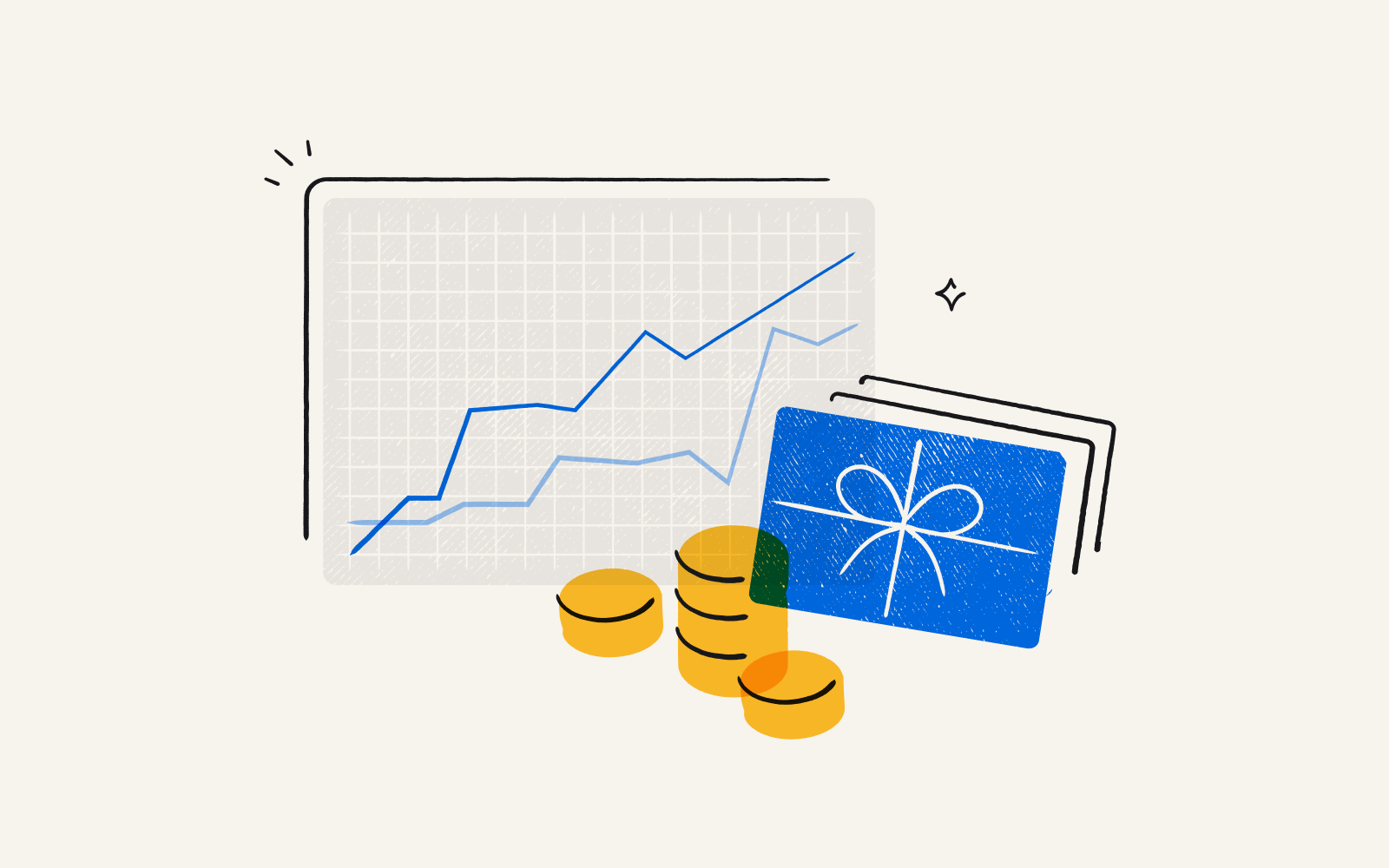Research incentives best practices in 2024
By Mia Mishek|5 min read|Updated Jan 25, 2024

Incentives are the key to achieving a high participation rate. Research shows that incentives increase study response rates by up to 19%.
But ensuring your incentive strategy is effective and ethical can be a challenge. Determining exactly how much to offer, how to recruit qualified participants, how to pay people, and how to structure your study is both a science and an art.
Below we’ll guide you through the steps for determining the best strategy for your incentives to grow participant rate and get research done faster.
Why does having an incentive strategy matter?
Incentives are proven to increase response rates for all modes of research. But the effectiveness of incentives varies based on what you send. Specifically:
Monetary incentives increase response rates more than gifts, and prepaid incentives increase responses more than incentives paid out after the study concludes.
In general, response rates increase as the size of the incentive increases, but at a declining rate. So, there’s a sweet spot for how much you should offer; after that, increasing your offer has little effect.
Incentives have a more significant effect on studies where response rates without incentives are low.
So how much should you offer, and what other criteria do you need to keep in mind?
Best practices to build your incentive strategy
Determine how much research your team is currently doing, and how much research you want to do
Take a look at how much research you are doing today. It’s important to understand the volume of research vs. how much you can spend. We found there are ideal rates (starting at $1.76 per minute) for incentives, but you need to find out if those rates are realistic for your organization. Talk to your Director of Research, or other members of management, to find out your research budget.
You also need to keep in mind future volume. Is your team planning on hiring one or two more researchers? Are you onboarding a new usability or survey tool that would increase the number of research requests? It goes without saying, but we’ll say it: more paid research costs more money.
Look at your current no-show or incomplete rate
Analyze how many no-shows you have, or how many incompletes you’re experiencing in surveys.
There are nuances on why subjects ghost or don’t complete a survey. It could be that they are not the right fit for the study, there were technical difficulties, or they simply forgot. Or maybe they decided doing something else is more worth their time.
But incentives do increase the likelihood of people participating in your research, and if you’re experiencing high no-shows (the industry standard is around 11%), it’s a sign that you may need to adjust your incentive strategy.
Understand the type of research you’re currently doing and how much you should pay
Different research requires different incentives. Our research into incentives shows that the average participant wants $1.76 per minute. As duration increases, the cost-per-minute gets cheaper.
Take a look at the volume of research you’re doing, whether it’s moderated interviews, surveys, usability tests, etc.
Keep in mind a couple of key points we found in our research regarding how much participants want:
Interviews cost more than surveys. For a 30-minute interview, you should pay about $57, compared to $48 for a survey.
For a 15-minute task, people want $26.40. That jumps to $48.00 for a 30-minute task. And to a little more than $69 for 60 minutes.
On average, online interviews must be compensated at a flat rate of $8.66 more than surveys to be equally attractive.
Get to know who you are talking to the most and how much to pay them
Most organizations are trying to recruit multiple audiences for studies, whether that’s external participants or internal users. No matter who you’re recruiting, the easiest way to determine exactly how much to pay them is with our research incentive calculator.
In general, we found that while most people we surveyed valued their time equally, regardless of whether they were working or how much they were earning, the type of person does impact the amount of incentive they expect to get paid, specifically in two demographics: students and high-earners.
Key differentiators you should keep in mind:
Students are comfortable with a 20% lower rate than those in the workforce.
People earning $200,000 or more expect much higher compensation (46% higher, to be specific) for their time to consider participating worthwhile.
Unemployed people have their own particulars:
Unemployed people want to be paid over $35 more if they’re paid with a gift card to a specific retailer (as opposed to a more flexible option).
Unemployed people need to be compensated $20.57 more to do an interview compared to a survey, while the difference is only $7.62 for employed people.
How you pay people also matters
Cash is still king. Research participants primarily want to be paid in cash transfers. You have to offer more to achieve the same perceived value when using other payout options, such as a Visa prepaid card or an Amazon.com gift card.
But that doesn’t mean you have to go with cash — sending bulk transfers can be a real pain, and physical bills are a security risk.
We found that people who earn more than $50,000 a year always welcome a gift card when they can select one from a list of retailers. You can send virtual gift cards that recipients can redeem for tons of options with Tremendous, for example.
Many researchers find that the happy medium is to offer a payout redeemable for a wide assortment of prepaid and gift cards — which, if you use Tremendous, is simple, free, and covers over 200 countries.
Know the general rules of thumb around incentives.
We learned a lot through our research around incentives. These are the most impactful findings:
Study length has the biggest impact on how participants perceive incentives. They expect to be paid more for longer studies, and will accept lower payment for shorter studies.
Participants require more compensation for studies that involve human interaction (like moderated interviews).
Cash is preferred, but people who earn over $50,000 a year welcome the ability to select from a list of retailers.
Employment status and income level doesn’t affect how much participants want for incentives, except for students and high earners.
If you want to know exactly how much to pay participants for your specific study, use our calculator.
Avoid undue influence
Ethics are the cornerstone of user research. An important part of building an ethical incentive strategy is avoiding undue influence.
There’s a difference between influence and undue influence. Exerting influence means to impact, determine, guide, shape, alter, change, or transform the result in some way. Exerting influence is not unethical. It’s practically impossible not to exert any influence.
But exerting undue influence means that your influence is excessive, unwarranted, inappropriate, or improper.
Organizations such as the HHS, the Office for Human Research Protections, and the FDA have acknowledged that research incentives, particularly monetary incentives, are a common and acceptable practice as long as proper precautions are taken to avoid any undue influence.
So how do you avoid undue influence?
Namely, you need to keep in mind the demographic of you’re trying to reach. This will affect what amount you’re paying, payment type, or exchange rates.
You need to be aware of the income of your demographic populations, and make sure your incentives are reasonable and fair. For high-paid individuals like executives, a charitable donation can be a more reasonable offer than a cash incentive. But for low-income participants, it may be unethical to offer an exorbitant amount of money for a 5-minute survey asking about personal information, for example.
Incentives aren’t the end all, be all. Here are other ways you can maximize response rates.
We covered why you should offer incentives, best practices on how to start building your incentive strategy, how much to offer, and the ethics of it all.
But incentives are just one of seven factors that influence your response rate. According to professor Don Dillman in the book Survey Methodology (2020), to optimize response rate and quality, you must also consider these six factors:
Contact participants in different ways. Use a combination of email, phone, snail mail, or any other communication (in-product pop-ups, for example) to get into contact with your ideal participants.
Partner up. If the general population doesn’t know who you are, leverage a better-known organization's credibility to provide social proof that they should spend time participating in your study.
Be succinct. Simplify and shorten your study to the most important information so folks actually complete it.
Follow up with people. Contact people multiple times, strategically. How often and when you reach out matter.
Be clear about why you’re contacting them. The purpose, why they are selected, and other details can provide clarity to the participant.
Know your audience. You need to meet people where they’re at. Tailor your entire process to your key audiences. For instance, some populations may have reduced access to computers, so you may want to try mailed or telephone surveys.
Key takeaways for your incentive strategy
Incentives position you to get your research done faster, with higher quality participants. Having a robust incentive strategy is essential to achieving your research goals for the year.
When you’re preparing your incentive strategy, keep in mind a few best practices.
Look back at the status quo. Look at how much research you’re doing, and how much you’re targeting for. Track your no-show rates across study types.
Understand the type of research you’re doing. Different study types require different incentives, at different rates. Keep in mind that interviews cost more than surveys.
Know your demographic. Depending on who they are, participants will require different amounts or types of incentives, whether it’s money, gift card, or a charitable donation.
How you pay people matters. Cash is preferred, but you can offer some participants the ability to select a prepaid or gift card from a list of retailers, like Tremendous.
Avoid undue influence. Know who you’re talking to and if what you're offering is fair and ethical.
Incentives aren’t the end all, be all. Incentives are just one piece of the puzzle to increase participation rate and reduce no-shows. Your communication strategy and style also affect whether people respond.
The easiest way to distribute incentives is with Tremendous. It takes just a few minutes to send a dozen or a thousand research incentives. We also make it easy to send incentives through the survey tools you’re already using, including Typeform, Qualtrics, Great Question, and Panelfox. Or use our integration with Zapier to connect to 5,000 other apps.
The best part is that your recipients can redeem their incentives however they want, instantly. We offer over 1,700+ redemption options in 200 countries, including Visa, Amazon, and PayPal.
Send your first reward today, or chat with our sales team.
Published January 25, 2024
Updated January 25, 2024


